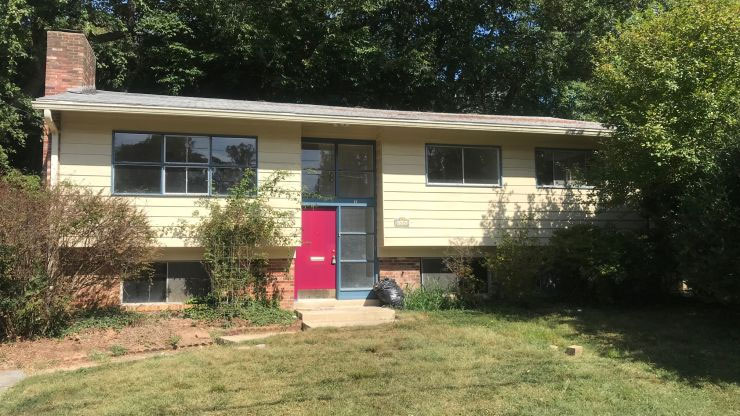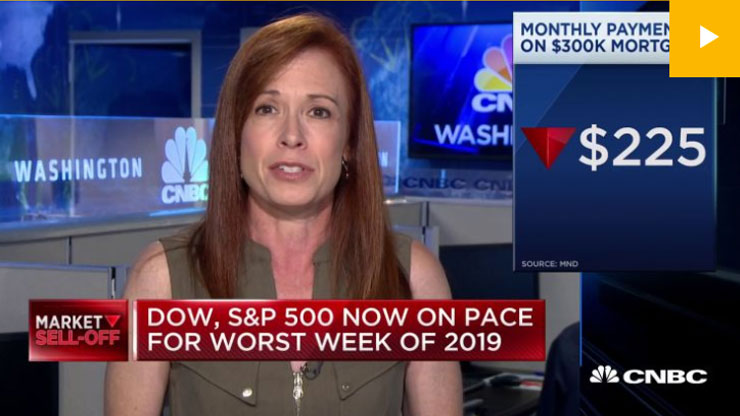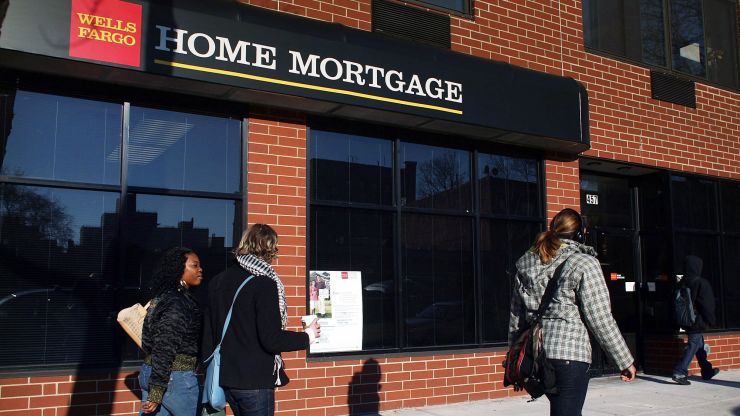Consumer sentiment on housing fell in September, according to another survey from Fannie Mae. More Americans said they were concerned about losing their job, and that in turn pulled housing sentiment down.

October 14 th, 2019
Black & White Homes
Lending to house flippers hits a 13-year high as prices and competition heat up
-
- It is getting much harder to profit on house flipping today. Home prices are high, there are very few distressed or foreclosed properties available to buy cheaply, and the competition among investors is fierce.
- The good news is, mortgage rates are historically low for bank lending, and private lenders are eager to invest their cash somewhere other than the volatile stock and bond markets.
- The dollar volume of financed flip purchases in the second quarter of this year jumped 31% annually, from $6.4 billion to $8.4 billion, according to ATTOM Data Solutions.That is the highest level since the third quarter of 2006.
It is getting much harder to profit on house flipping today. Home prices are high, there are very few distressed or foreclosed properties available to buy cheaply, and the competition among investors is fierce.
So investors are more cash-strapped and have to use more financing to flip their homes. The good news is, mortgage rates are historically low for bank lending, and private lenders are eager to invest their cash somewhere other than the volatile stock and bond markets.
As a result, the dollar volume of financed flip purchases in the second quarter of this year jumped 31% annually, from $6.4 billion to $8.4 billion, according to ATTOM Data Solutions.That is the highest level since the third quarter of 2006.
“We have been seeing a steady incline in total financed purchase dollar volume every quarter since about 2015 and now we are reaching pre-recession dollar volume highs,” said Todd Teta, chief product officer at ATTOM Data. “With profit margins dropping on home flips, an increase in financing could up the risk for investors who have to factor interest payments into their deals.”
Vipin Motwani is an investor with Iron Gate Development in the Washington, D.C. area. He expects to flip about 15 homes this year.
“It’s always smarter to use a mortgage because you get leverage, you can do many more deals, right?” said Motwani. “Also the banks have become a little bit more easy in lending on this flip business. It used to be a lot tougher.”
Motwani usually goes to community banks, because larger banks, he says, are tougher to deal with, especially for self-employed investors.
“They’re going to try to fit you into a certain box, and If you don’t fit into that box, then they’re not going to give you the financing,” he said. “What they’re looking for is the W2 wage earner, for somebody who has consistent income from an easily sourced job, for example, they can verify your income, they can know you’re good for the loan.”
But a lot of real estate flippers are using rental income or money from the last flip for the next flip, so it is harder for a large bank or an online independent lender to verify that income. The community banks operate differently.
“They meet with you, they know you as a person, and they say, okay, we know where your income comes from. You’re a good bet, we’ll give you the money for the mortgage,” added Motwani.
Still, mortgage underwriting in general is far stricter than it was during the last housing boom. That’s why only about 41% of flipped properties in the second quarter of this year were bought using financing, either mortgages or private lending. Compare that to 68% that used financing during the height of the last housing boom in 2005 when just about anyone could get a mortgage with no proof of income.
That said, Fannie Mae, Freddie Mac and the FHA do back loans to investors, although a limited number per borrower. Given the current health of the housing market, some say the risk for lenders is pretty low.
“Underwriting standards tend to be tougher for investor mortgages, and if you are planning on flipping (not collecting rent), you probably need to document you can support payments on all investor mortgages in addition to other debt,” said Guy Cecala, CEO of Inside Mortgage Finanace. “These are not your ‘No Doc,’ no down payment investor loans available before the housing crisis.”
In addition to traditional lenders offering these investor loans, many specialized finance companies offer them as well.
“And yes, these types of mortgages are growing in popularity after dropping dramatically during the mortgage crisis,” added Cecala.

October 14 th, 2019
Black & White Homes
New plunge in mortgage rates could save borrowers thousands of dollars
-
- The average rate on the popular 30-year fixed mortgage was at 3.75% last Friday. By Thursday, it had dropped to 3.62%, according to Mortgage News Daily.
- Rates are now about 1.25 percentage point lower than they were at this time last year.
- For the average borrower taking out a $300,000 mortgage, that is a savings of about $225 on the monthly payment, or $2,700 per year.
Fall homebuyers are getting a bonus. The sell-off in the stock market is causing an unexpected turnaround in mortgage rates.
Mortgage rates fell throughout much of the summer but then made a sharp jump higher in September. Now rates are headed back down, along with the Dow Jones Industrial Average, which fell more than 800 points total on Tuesday and Wednesday, the two first days of October.
The average rate on the popular 30-year fixed mortgage was at 3.75% last Friday. By Thursday, it had dropped to 3.62%, according to Mortgage News Daily. This is an average for borrowers with solid credit scores and at least a 20% down payment.
More dramatic is the comparison with a year ago. Rates are now about 1.25 percentage point lower than they were at this time last year. For the average borrower taking out a $300,000 mortgage, that is a savings of about $225 on the monthly payment, or $2,700 per year. That is big savings for borrowers refinancing their loans, and it gives buyers significantly more purchasing power in an already pricey housing market.
Lower rates are already boosting sales for the nation’s homebuilders. Lennar posted higher-than-expected new orders in the third quarter as interest rates dropped.
“The market for new homes has been improving from last year’s pause, as lower interest rates have stimulated demand and improved affordability, while the overall fundamentals of the economy have remained strong,” Lennar Executive Chairman Stuart Miller said on a call with analysts.
He also said low rates outweighed concern over a potential recession.
“I know that there is a lot of question about upcoming potential recession and things like that. Our customers don’t seem to be viewing it that way, and I think that the housing market in general seems solid and strong and continuing to improve,” Miller added.
At an open house in Atlanta last weekend, buyers definitely had mortgage rates in mind. The home was listed at $215,000, just below the national median price. That made it ripe for both first-time buyers and investors.
“You can’t beat a good rate, especially with the speculating of a pending bubble burst. I think now is a good time to get in if you’re looking to purchase a property,” said Andrew Hughes, a real estate investor touring the home.
Nadia and Bryant Mormon want to stop wasting money on their rental and make a solid investment. They see an opportunity with low rates and a slight cooling in home price appreciation.
“If you’re waiting, waiting, oh this might happen, or that might happen, it would be a year, 2 years from now, and this beautiful home that’s at a very affordable price point now will be $300,000, and then it’s out of your budget,” said Bryant. “You can’t be paralyzed by what may happen and what may not happen.”
“You can’t be paralyzed by fear, that’s for sure,” added Nadia.
Home prices are still rising, but the gains have been cooling. More demand could reheat those gains again, especially given the low supply of homes for sale.
Mortgage applications to refinance a home loan jumped 14% last week, according to the Mortgage Bankers Association. That was before the move even lower this week. Most lenders recommend that if a borrower can lower their rate by at least 75 basis points, a refinance is probably worth the work and the fees.
Mortgage rates generally follow the yield on the 10-year Treasury, which is now the lowest in about a month. Friday’s monthly employment report could push it even lower or just the reverse, depending on what the report says about the strength of the economy.

October 14 th, 2019
Black & White Homes
Weekly mortgage refinances jump 10% as rates drop to the lowest level since August
- Refinance demand surged, pushing total mortgage application volume up 5.2% last week compared with the previous week, according to the Mortgage Bankers Association’s seasonally adjusted index.
- The average contract interest rate for 30-year fixed-rate mortgages with conforming loan balances ($484,350 or less) decreased to 3.90% from 3.99%, with points falling to 0.37 from 0.38 (including the origination fee) for loans with a 20% down payment.
- Rate-sensitive refinance applications jumped 10% from the previous week and were 163% higher than the same week one year ago. The refinance share of mortgage activity increased to 60.4% of total applications from 58.0% the previous week.
An unexpected decline in mortgage interest rates had homeowners calling their lenders last week, looking to save money on their monthly payments.
Refinance demand surged, pushing total mortgage application volume up 5.2% last week compared with the previous week, according to the Mortgage Bankers Association’s seasonally adjusted index. Volume was 69% higher than the same week one year ago, when interest rates were considerably higher.
The average contract interest rate for 30-year fixed-rate mortgages with conforming loan balances ($484,350 or less) decreased to 3.90% from 3.99%, with points falling to 0.37 from 0.38 (including the origination fee) for loans with a 20% down payment. That rate was 115 basis points higher the same week one year ago.
“U.S. Treasury rates moved sharply lower last week, as data showing weakness in the services sector was a sign that slowing economic growth is not confined to the manufacturing sector,” said Joel Kan, associate vice president of economic and industry forecasting at the MBA. “This in turn caused a flight to safety by investors, resulting in mortgage rates dropping across the board.”
In response, rate-sensitive refinance applications jumped 10% from the previous week and were 163% higher than the same week one year ago. The refinance share of mortgage activity increased to 60.4% of total applications from 58.0% the previous week.
Mortgage applications to purchase a home, which are less rate-sensitive week to week, decreased 1% from one week earlier but were 10% higher than the same week one year ago.
“Despite low rates, the cloudier economic outlook and ongoing market uncertainty may be keeping some potential homebuyers away from the market this fall,” Kan said.